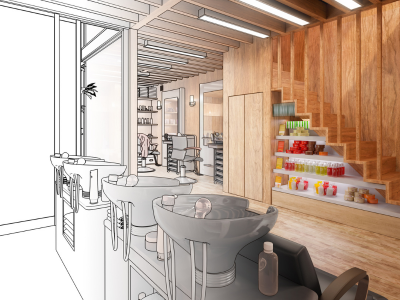Are you seeking to expedite client approvals and differentiate yourself in a competitive market? The current AEC spectrum is advancing rapidly. It has reached a point where visuals are not only helpful but essential.
Capitalizing on services associated with 3D architectural rendering at the pre-sales stage can elevate how designs are presented, understood, and sold. These services enable firms to share complex visions with ease, thereby strengthening the buyer experience before the actual construction work begins.
Significance of Visual Impact in Pre-Sales
Pre-sales is a phase when compelling storytelling can have a significant impact on the minds of end users. When decision-makers can clearly envision a design before it is built, they are more likely to commit.
This is precisely where 3D architectural rendering services come into play. These realistic renderings provide a thorough preview of the final output. As a result, uncertainties are reduced, and confidence among investors, developers, and stakeholders is increased. They also aid marketing teams in generating buzz with striking visuals across websites, brochures, and presentations, ensuring the pitch is unforgettable.
Better Communication with Stakeholders
One of the foremost benefits of 3D architectural rendering solutions is the ability to revamp communication among engineers, architects, and clients. When every stakeholder is on the same page about the project, revisions become more accurate, and only a few rounds of clarification are required.
With limited technical knowledge, stakeholders are likely to struggle to interpret 2D drawings. These renderings remove that challenge by offering:
-
Lifelike exterior and interior visuals.
-
Precise lighting and texture details.
-
Multiple viewpoint simulations.
This level of clarity facilitates speedy decision-making and minimizes approval delays.
Establishing Trust Through Transparency
Trust is of great value in the pre-sales stage. 3D architectural rendering services provide feasible buyers with the assurance that what they see is what they will receive. With minimal surprises and more exact depictions, clients become capable of visualizing space planning, material choices, and aesthetics well before the first brick is laid.
Such transparency makes a project’s budgeting more straightforward and minimizes the chances of mid-project dissatisfaction, a vital component of lasting client relationships.
The Marketing Power of Visualization
Architectural businesses can expand their reach by incorporating 3D architectural rendering solutions into their marketing strategies. These visuals can be utilized to craft immersive content for promotional videos, digital campaigns, and sales decks. In comparison with CAD models, these renderings stimulate emotion and assist potential clients in connecting with the design on a personal level.
And in highly competitive bidding situations, an emotionally captivating presentation seldom makes the difference between winning and losing a contract.
Improving Speed and Precision in Proposals
During the pre-sales phase, faster turnarounds are often sought. Clients may ask for adjustments, alternative designs, or color changes. However, with 3D architectural rendering services, changes can be performed swiftly without having to reconstruct entire models.
Moreover, proposals that involve realistic renderings appear more refined and professional. This gives firms a competitive advantage over others who mostly rely on outdated 2D plans.
Collaboration with 3D Architectural Visualization Services
With this industry’s growth, there is an advancing overlap between the services of 3D architectural rendering and 3D architectural visualization. Although rendering emphasizes generating real-world still images, visualization goes a bit further to involve animated walkthroughs, interactive simulations, and VR experiences.
Utilizing both enables firms to:
-
Craft immersive design journeys.
-
Deliver dynamic sales presentations.
-
Adjust content for various digital platforms, including websites, social media, and client portals.
In collaboration, these tools make stronger connections between the vision and the viewer.
Better Alignment with Design and Minimum Revisions
Weak communication during the pre-sales stage often leads to design modifications that incur both financial and time costs. Through the implementation of 3D architectural rendering services at the early stage, firms can ensure alignment prior to finalizing design documents.
This solution-oriented approach indicates that changes can be executed digitally, saving on the costs of the physical model and limiting rework during construction. As a result, clients also start feeling more involved in the process, enabling them to commit earlier.
Conclusion
Pre-sales efficiency depends on speed, clarity, and emotional involvement. Each of these aspects can be achieved by integrating early 3D architectural rendering solutions. When coupled strategically with 3D architectural visualization services, they turn out to be powerful tools for winning project contracts and impressing clients.


